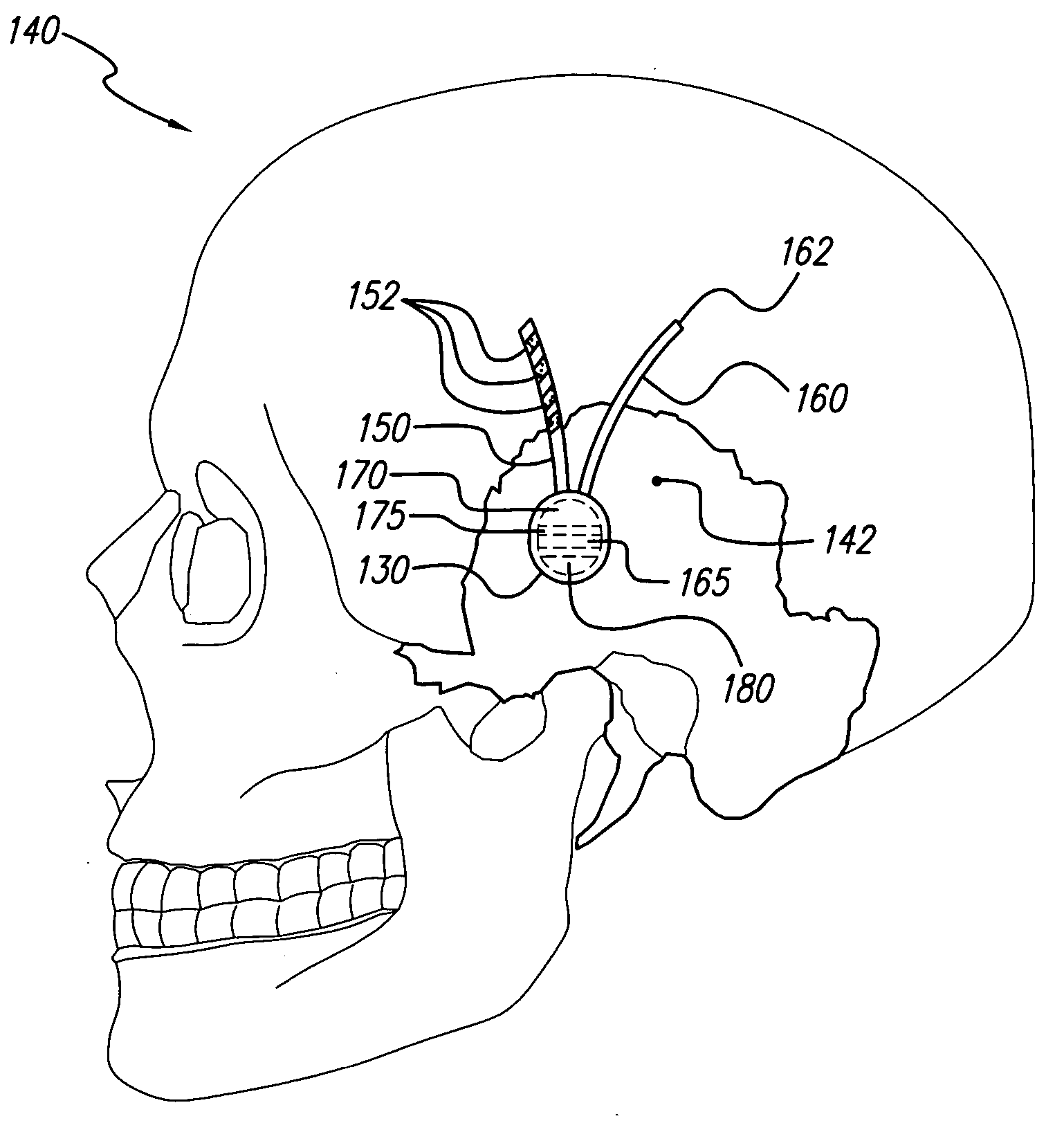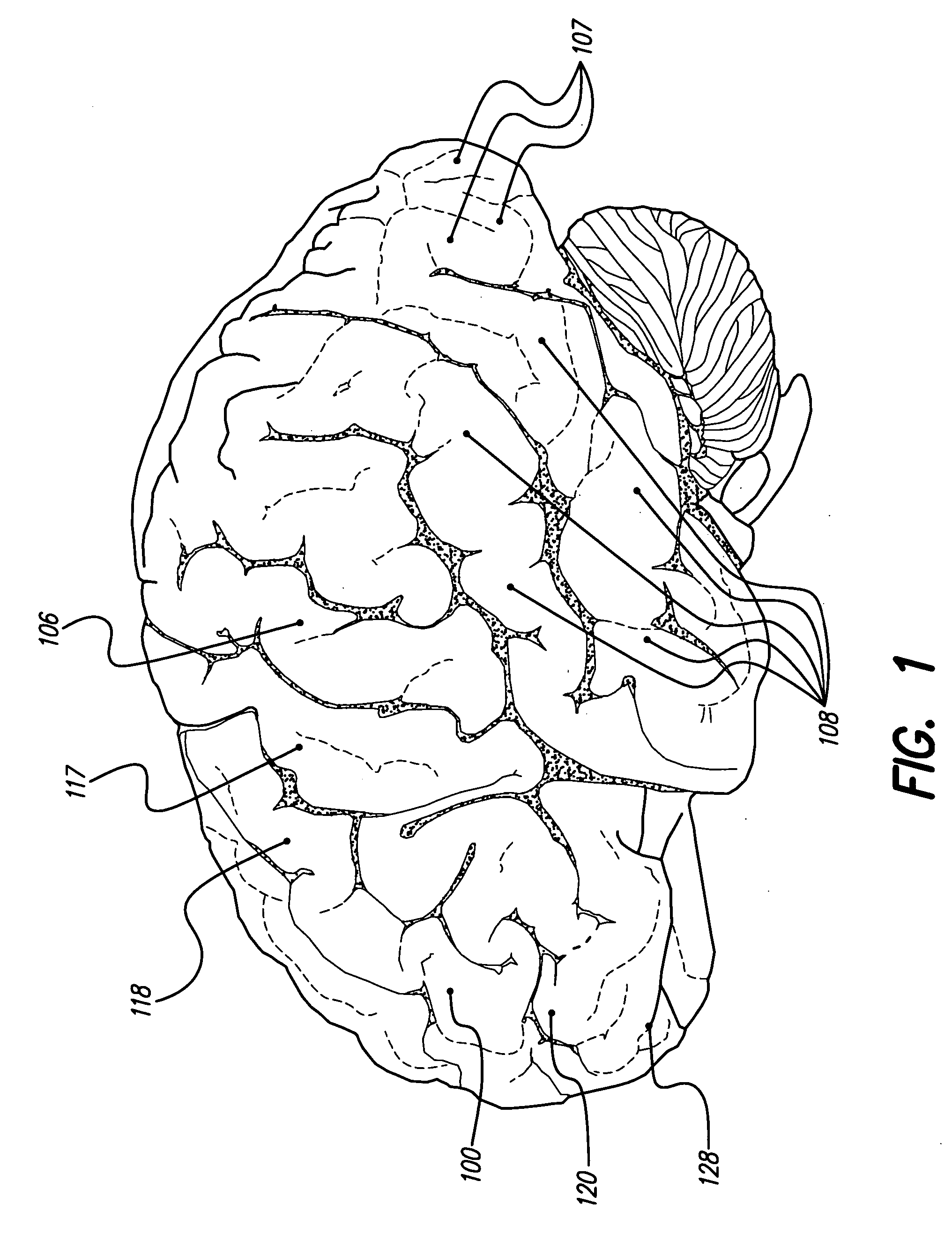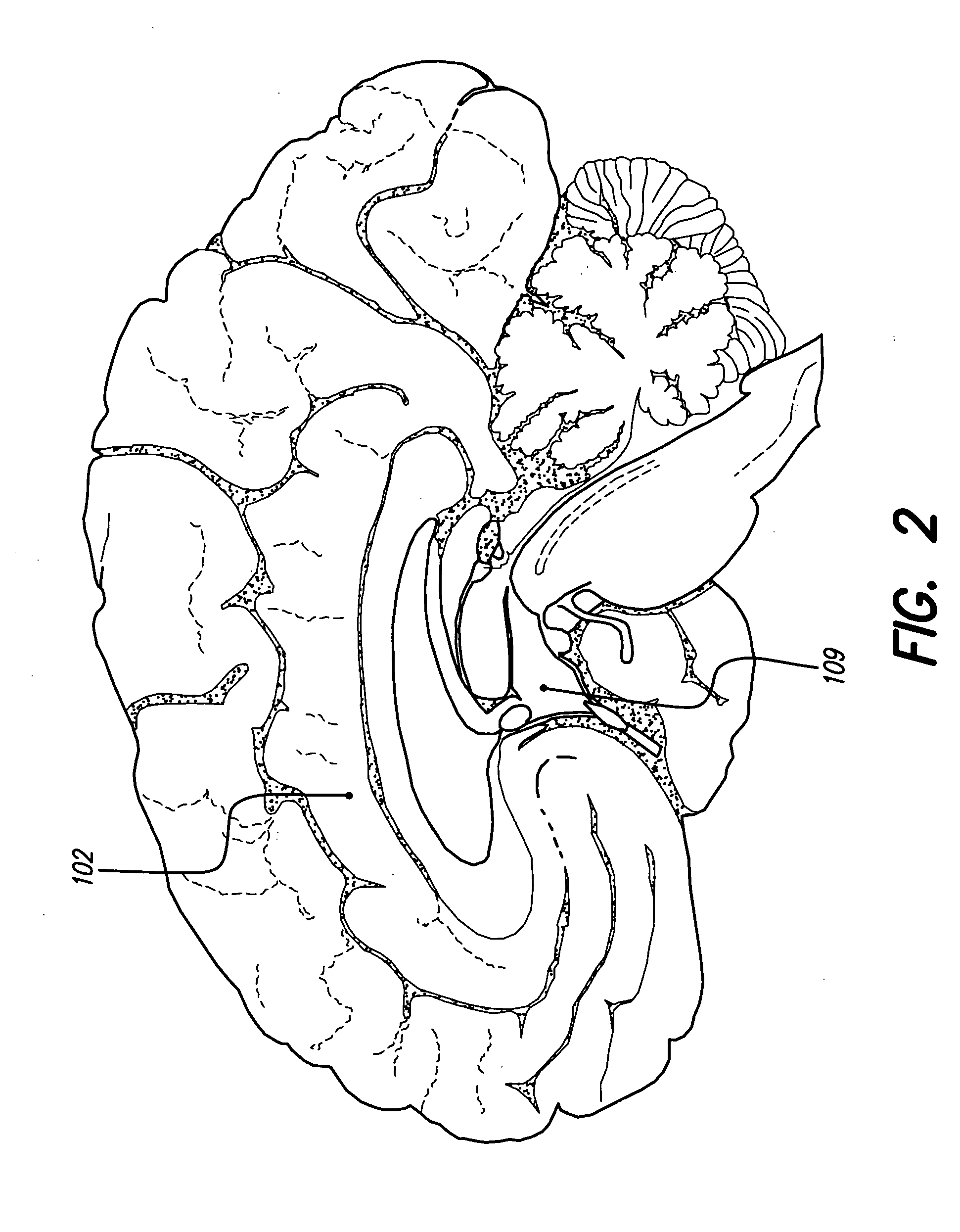Treatment of mood and/or anxiety disorders by electrical brain stimulation and/or drug infusion
a technology of electrical brain stimulation and mood disorders, applied in the field of treatment of mood disorders by electrical brain stimulation and/or drug infusion, can solve the problems of not teaching or suggesting the use of such a system for mood disorders, and suffering from treatment-resistant depression have almost no alternatives, so as to reduce activity, reduce pain, and increase excitement.
- Summary
- Abstract
- Description
- Claims
- Application Information
AI Technical Summary
Benefits of technology
Problems solved by technology
Method used
Image
Examples
Embodiment Construction
[0058] The following description is of the best mode presently contemplated for carrying out the invention. This description is not to be taken in a limiting sense, but is made merely for the purpose of describing the general principles of the invention. The scope of the invention should be determined with reference to the claims.
[0059] As described above, decreased blood flow has been noted in the left dorsolateral prefrontal cortex (or medial frontal gyrus) of depressed patients, and was correlated with the severity of negative symptoms. FIG. 1 depicts the lateral surface of the brain, and shows the location of the dorsolateral prefrontal cortex 100. Similarly, the anterior cingulate gyrus has demonstrated decreased blood flow or metabolic activity in patients with depression, while increased activity has been noted in the anterior cingulate gyrus of patients responding to antidepressant medication. FIG. 2 depicts the medial surface of the brain, and indicates the location of the...
PUM
 Login to View More
Login to View More Abstract
Description
Claims
Application Information
 Login to View More
Login to View More - R&D
- Intellectual Property
- Life Sciences
- Materials
- Tech Scout
- Unparalleled Data Quality
- Higher Quality Content
- 60% Fewer Hallucinations
Browse by: Latest US Patents, China's latest patents, Technical Efficacy Thesaurus, Application Domain, Technology Topic, Popular Technical Reports.
© 2025 PatSnap. All rights reserved.Legal|Privacy policy|Modern Slavery Act Transparency Statement|Sitemap|About US| Contact US: help@patsnap.com



